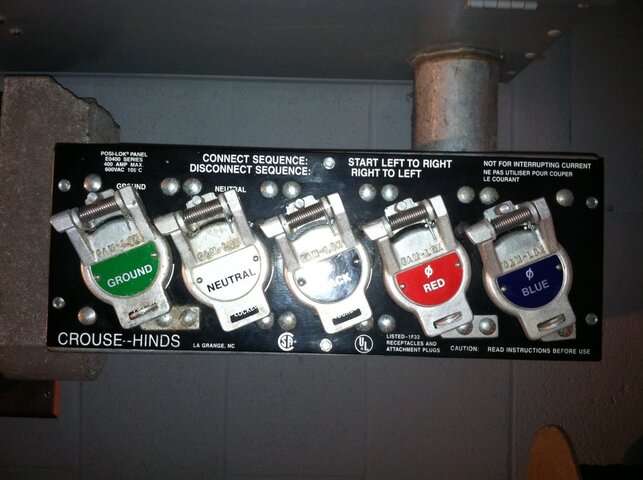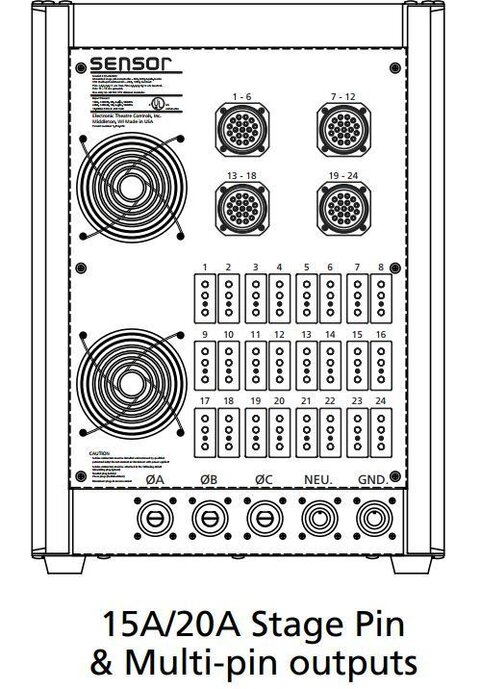Hear, here.
See the first PDF at
Dimmer feeds--How much power is enough? - ControlBooth .
In my opinion, it's likely not cost-effective to buy and run 4/0 wires to
power a 24x2.4kW
dimmer pack. Depending on the distance from the
company switch to the pack, it might be more fiscally responsible to rent/
purchase a 200A
disconnect and run 2/0
wire. Or, again depending on distance and connected load, a 100A
disconnect and #2
wire.
We've discussed previously our distaste for Posi-Lock panels elsewhere.
And here are
NEC sections 520.53(h)(3) and (4) that allow smaller cables on the 400A
switch:
(3) Supply Conductors Not Over 3.0 m (10 ft) Long. Where supply conductors do not exceed 3.0 m (10 ft) in length between supply and switchboard or supply and a subsequent overcurrent device, the supply conductors shall be permitted to be reduced in size where all of the following conditions are met:
(1) The
ampacity of the supply conductors shall be at least one-quarter of the
current rating of the supply
overcurrent protective device.
(2) The supply conductors shall terminate in a single
overcurrent protective device that will limit the load to the
ampacity of the supply conductors. This single overcurrent device shall be permitted to supply additional overcurrent devices on its load side.
(3) The supply conductors shall not penetrate walls, floors, or ceilings or be run through doors or traffic areas. The supply conductors shall be adequately protected from physical damage.
(4) The supply conductors shall be suitably terminated in an approved manner.
(5) Conductors shall be continuous without splices or connectors.
(6) Conductors shall not be
bundled.
(7) Conductors shall be supported above the floor in an approved manner.
(4) Supply Conductors Not Over 6.0 m (20 ft) Long. Where supply conductors do not exceed 6.0 m (20 ft) in length between supply and switchboard or supply and a subsequent overcurrent protection device, the supply conductors shall be permitted to be reduced in size where all of the following conditions are met:
(1) The
ampacity of the supply conductors shall be at least one-half of the
current rating of the supply
overcurrent protective device.
(2) The supply conductors shall terminate in a single
overcurrent protective device that limits the load to the
ampacity of the supply conductors. This single overcurrent device shall be permitted to supply additional overcurrent devices on its load side.
(3) The supply conductors shall not penetrate walls, floors, or ceilings or be run through doors or traffic areas. The supply conductors shall be adequately protected from physical damage.
(4) The supply conductors shall be suitably terminated in an approved manner.
(5) The supply conductors shall be supported in an approved manner at least 2.1 m (7 ft) above the floor except at terminations.
(6) The supply conductors shall not be
bundled.
(7) Tap conductors shall be in unbroken lengths.
ST








